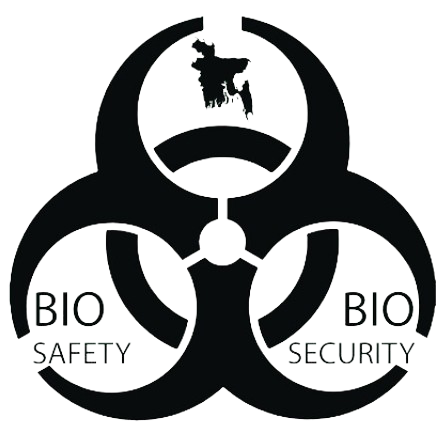Useful Links and Guidelines
Useful Links and Guidelines
Pathogen Safety Data Sheets
Pathogen Safety Data Sheets (PSDSs) are technical documents used by individuals working with pathogens in the laboratory.
WHO Laboratory Biosafety Manual ‐ 4th Edition
For more than 20 years, since it was first published in 1983, the Laboratory Biosafety Manual has provided practical guidance on biosafety techniques for use in laboratories at all levels. The 4th ed was published on 21 December 2020
Laboratory biosafety manual, 4th edition (who.int)
http://www.who.int/csr/resources/publications/biosafety/WHO_CDS_CSR_LYO_2004_11/en/
http://www.who.int/csr/resources/publications/biosafety/Biosafety7.pdf
WHO Tuberculosis laboratory Biosafety Manual
Laboratory biosafety is the process of applying a combination of administrative controls, containment principles, practices and procedures, safety equipment, emergency preparedness, and facilities to enable laboratory staff to work safely with potentially infectious microorganisms; biosafety also aims at preventing unintentional exposure to pathogens or their accidental release. This manual describes the minimum biosafety measures that should be implemented at the different levels of tuberculosis (TB) testing laboratories to reduce the risk of a laboratory‐acquired infection.
http://apps.who.int/iris/bitstream/10665/77949/1/9789241504638_eng.pdf?ua=1
Biosafety in Microbiological and Biomedical Laboratories (BMBL) 6th Edition
Biosafety in Microbiological and Biomedical Laboratories (BMBL) quickly became the cornerstone of Biosafety practice and policy in the United States upon first publication in 1984. Historically, the information in this publication has been advisory is nature even though legislation and regulation, in some circumstances, have overtaken it and made compliance with the guidance provided mandatory. The 6th Ed was published June 2020
Biosafety in Microbiological and Biomedical Laboratories—6th Edition (cdc.gov)http://www.cdc.gov/biosafety/publications/bmbl5/bmbl.pdf
Arthropod Containment Guidelines (ACG)
ACG recommended biosafety levels specific for for arthropods of public health importance. The guidelines are subjected to change based on further consideration of the requirements for containment of arthropods and vectors.
https://www.sc.edu/ehs/Biosafety/Arthropod%20Containment%20Guidelines%20(ACME).pdf
Biosafety Measures in the Clinical Laboratory
Clinical laboratories are special, often unique, work environments that may pose identifiable infectious disease risks to per‐ sons in or near them. These infections have been recognized for many years. In a series of published early surveys, Pike and associates reported over 3,000 cases of laboratory‐acquired infections, including brucellosis, tuberculosis, typhoid, streptococcal infections, and hepatitis. These incidents, along with considerable anecdotal information, suggest that most laboratory‐acquired infections occur as a result of error, accident, or carelessness in the handling of a known pathogen; often the mode of transmission is unknown.
http://labmed.oxfordjournals.org/content/labmed/32/8/435.full.pdf
Safe Work Practices in Human and Animal Medical Diagnostic Laboratories: Recommendations of a CDC‐convened, Biosafety Blue Ribbon Panel Prevention of injuries and occupational‐related infections in U.S. laboratories is a major concern. A previous publication presented biosafety guidelines for laboratories; however, it did not address safety in diagnostic labs in human and animal medicine. In 2008, CDC convened a Blue Ribbon Panel to review safety issues in diagnostic labs. This supplement presents the guidelines developed by this group of experts.
http://www.cdc.gov/mmwr/pdf/other/su6104.pdf
Guidelines for Biosafety Laboratory Competency
These supplementary guidelines for Biosafety laboratory competency, developed on behalf of CDC and the APHL, outline the essential skills, knowledge, and abilities required for working with biologic agents at the three highest Biosafety levels (BSLs) (levels 2, 3, and 4).
https://www.cdc.gov/mmwr/pdf/other/su6002.pdf
Biosafety Guidelines of Bangladesh
These Biosafety guidelines are applicable to all research and development activities of modern biotechnology conducted in laboratories of the government research institutes, state enterprises, universities, international organizations located in Bangladesh, private companies or non‐governmental organizations. It applies to laboratory and field trial, trans‐boundary movement, transit, handling and use of all GMOs/LMOs that may have adverse effects on the conservation and sustainable use of biological diversity, taking also into account risks to human health.
http://dbtbiosafety.nic.in/act/Bangladesh.pdf
Bangladesh Biosafety and Biosecurity Guidelines for Handling and Disposal of Biohazardous Materials
1st edition of the Bangladesh Biosafety and Biosecurity Guidelines for Handling and Disposal of Biohazards is the document recommending best practices for biorisk management in agricultural, biomedical, clinical, microbiological, plant, or animal sciences research and diagnostics or field activities from biosafety and biosecurity perspectives.
Bangladesh_Biosafety_and_Biosecurity_Guidelines.pdf (bdbiosafetysecurity.org)
Environment conservation rule 1997
Environmental protection is a practice of protecting the natural environment on individual, organization controlled or governmental levels, for the benefit of both the environment and humans. Due to the pressures of over consumption, population and technology, the biophysical environment is being degraded, sometimes permanently. This has been recognized, and governments have begun placing restraints on activities that cause environmental degradation. Following links are the Rules followed in Bangladesh for Environment Conservation.
http://faolex.fao.org/docs/pdf/bgd19918.pdf
http://doe.portal.gov.bd/sites/default/files/files/doe.portal.gov.bd/policies/2d85eb8f_1790_44de_837a_83c59077b39/Environment%20Conservation%20Rule‐1997.pdf
Bangladesh Medical Waste Management Guidelines
Bangladesh Medical Waste Management Guidelines was published in 2008 for managing medical waste in Bangladesh.
http://www.doe.gov.bd/site/view/policies/
Best Management Practices for Hospital Waste
This document discusses ecology’s environmental management concerns in hospitals. The focus of this document is to address proper management of dangerous waste in hospitals, but some of the concerns affecting water quality are included in this section as well.
https://fortress.wa.gov/ecy/publications/publications/0504013.pdf
Interim Guidance for Protecting Workers from Occupational Exposure to Zika Virus
Zika virus is primarily spread through the bites of infected mosquitoes. Mosquitoes can become infected when they bite infected persons and can then spread the Zika virus to other persons they subsequently bite.
http://www.cdc.gov/niosh/topics/outdoor/mosquito‐borne/pdfs/osha‐niosh_fs‐3855_zika_virus_04‐2016.pdf
Online quiz and completion certificate for transportation of hazardous goods
All personnel involved in shipping pathogens must undergo appropriate training for the transport of Category A infectious substances.
http://www.mayomedicallaboratories.com/education/online/dangerousgoods/index.html
MERS and SERS CoV. The information presented here are, collected from pathogens safety data sheet Canada, presented without any change!
WHO has published its interim guidance for laboratory biosafety related to 2019-nCoV/COVID-19/SARS-CoV-2, which is available from the following page and the link below:
Advice for healthcare workers on nCoV
To know the detail about:
2020 Coronavirus Outbreak Preparedness in Bangladesh
Handbook of COVID-19 Prevention and Treatment
Critical preparedness, readiness and response actions for COVID-19
